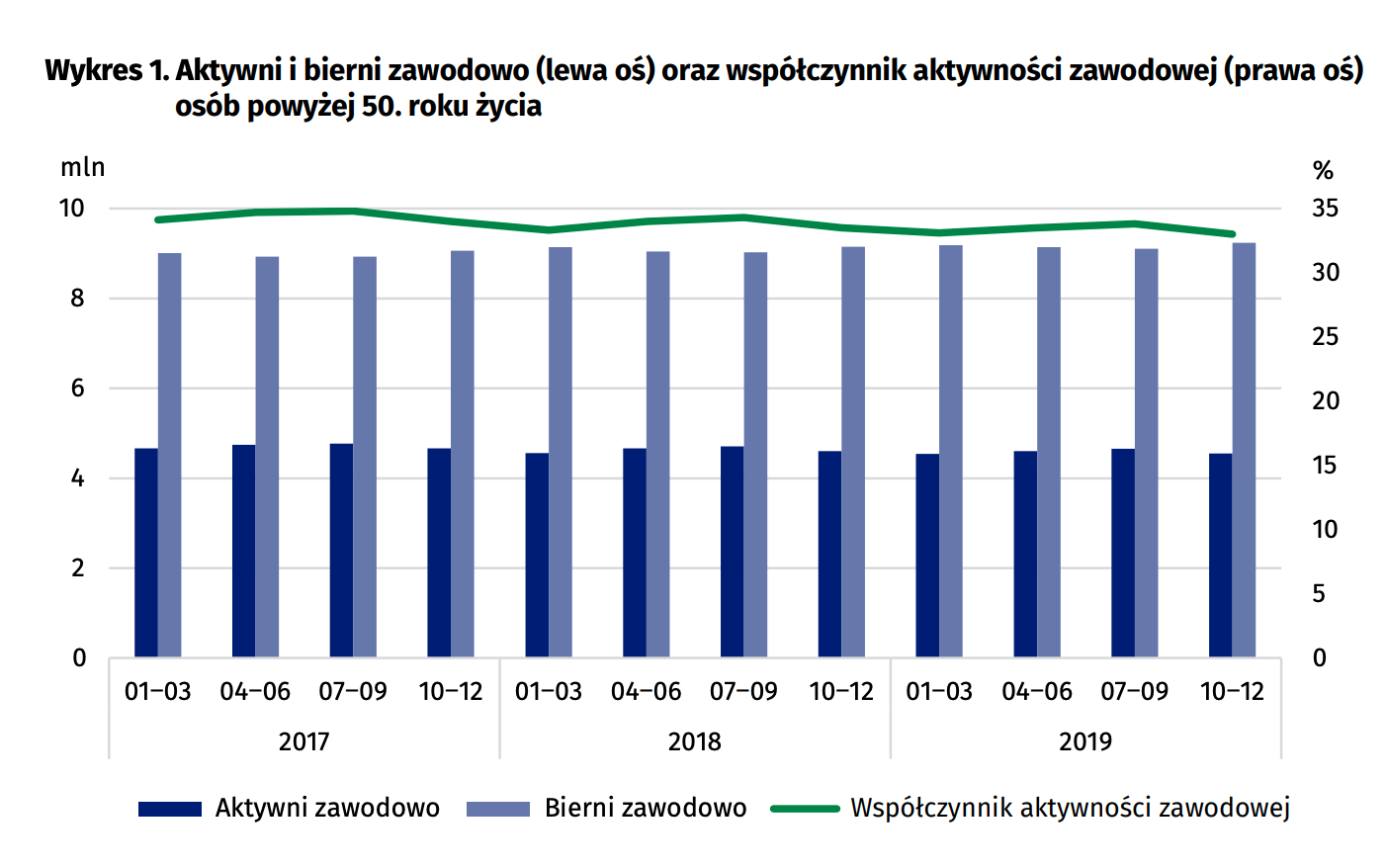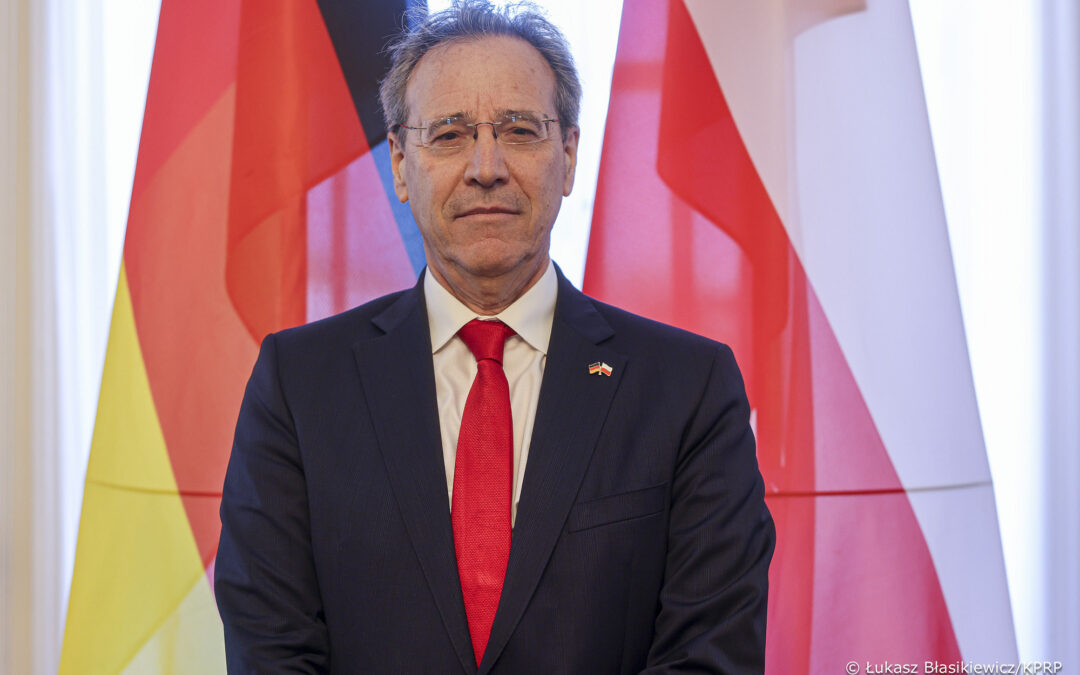The number of people aged 50 and over who participate in the labour force declined by 46,000 in 2019 compared to a year earlier, according to the latest data from Poland’s official statistics authority (GUS). The drop has been driven largely by an exodus of women from the workforce.
Given Poland’s demographic situation, this could become a growing problem, warns GUS. “Faced with an ageing population, increasing employment of the older unemployed, as well as their professional activation, could become a priority of labour market policy,” it says.

Left: Number of over 50s who were in the labour force (dark blue) and not in the labour force (light blue); Right: labour force participation rate of over 50s. Source: GUS
The number of over-50s in the labour force – which includes both people in work and seeking employment – fell to under 4.6 million in 2019, and was around 1% lower than the previous year.
The labour force participation rate among all over-50s stood at 33.4% in 2019, which was 0.4 percentage points lower than in 2018 and 22.9 percentage points below the level for the general population.
Among the 46,000 over-50s who left the workforce, 32,000 (70%) were women. Just one in four (26.2%) women aged over 50 years remained economically active in 2019, compared to 42.5% of men.

Age pyramid for working population. Left (blue): working men; Right (grey): working women. Darker shading for the difference of one gender over the other per year group. Source: GUS
Poland’s population has long been ageing, as Poles living longer lives, start families later and have fewer children. By 2019, 37.4% of the population was above the age of 50.
In 2017, the national-conservative Law and Justice (PiS) government lowered the retirement age to 65 for men and 60 for women. This made good on an electoral pledge to reverse an increase by the previous government but went against a trend of European countries with ageing populations raising retirement ages.
The government has also rolled out annual benefits to retirees, including a “thirteenth” monthly pension paid since 2019 and an additional “fourteenth” pension, which will be paid out in the final quarter of this year.
Experts note that the pandemic has exacerbated Poland’s pre-existing demographic problems, with the number of births dropping to a 17-year low and more people dying than in any year since the end of the Second World War.
Contrary to the government’s hopes, its flagship child benefit programme has not boosted the number of births – as it admitted last year.
Main image credit: Chris/Flickr (under CC BY 2.0)

Maria Wilczek is deputy editor of Notes from Poland. She is a regular writer for The Times, The Economist and Al Jazeera English, and has also featured in Foreign Policy, Politico Europe, The Spectator and Gazeta Wyborcza.




















